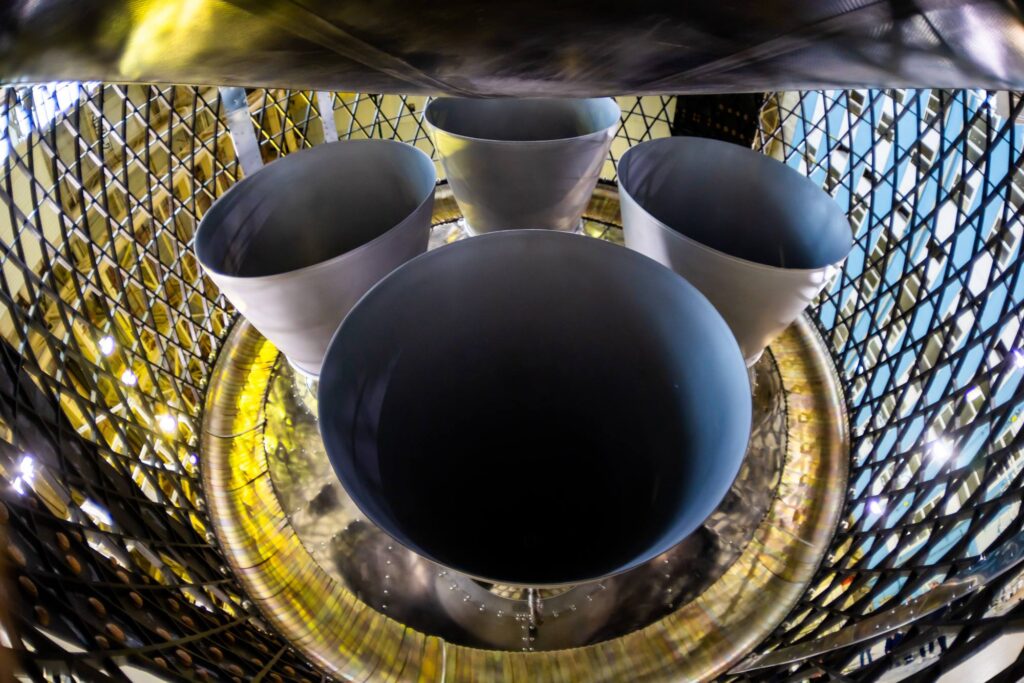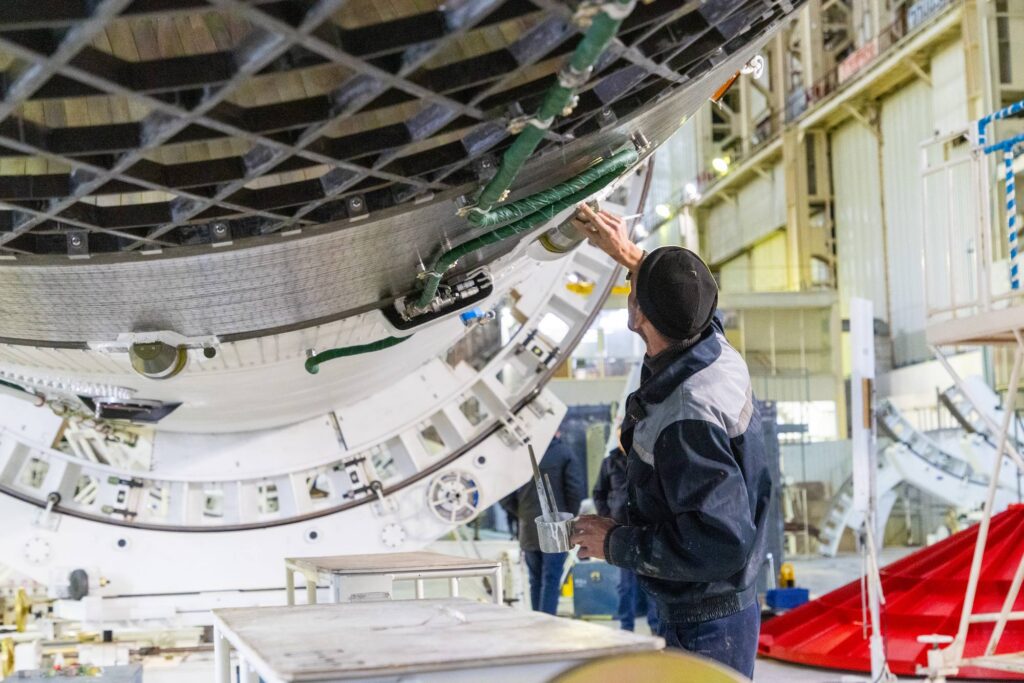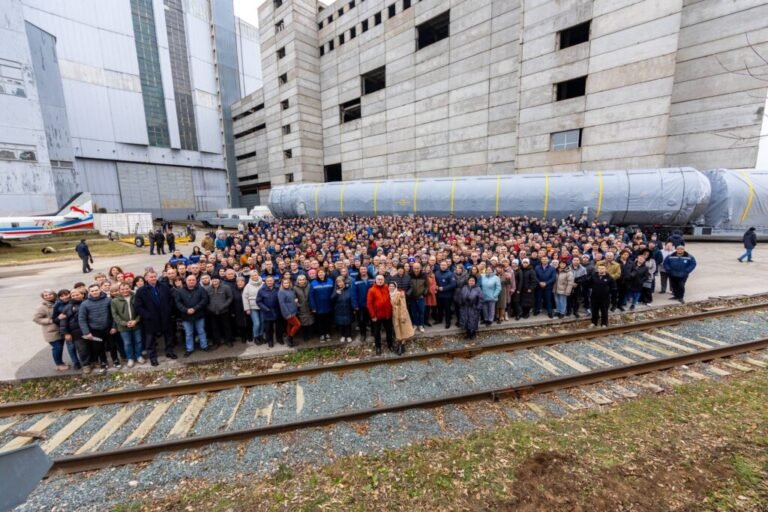
Roscosmos
The Soyuz 5 rocket is ready to depart Samara.
Roscosmos

Roscosmos
Apparently the rocket will use hot-staging to increase performance.
Roscosmos
The Soyuz 5 rocket is ready to depart Samara.
Roscosmos
Apparently the rocket will use hot-staging to increase performance.
Roscosmos

Roscosmos
A close-up view of the second-stage engine.
Roscosmos

Roscosmos
A close-up view of the interstage of the rocket.
Roscosmos
A close-up view of the second-stage engine.
Roscosmos
A close-up view of the interstage of the rocket.
Roscosmos
The Soyuz 5 rocket, also named Irtysh for a river that flows through Russia and Kazakhstan, answers to that purpose. Its first stage is powered by a single RD-171MV engine, which at sea level has three times the thrust of a single Raptor 3 engine, and is part of a family of engines that are the most powerful liquid-fueled rocket engines in the world. The RD-171MV uses only Russian components.
Russian officials also plan to use the Soyuz 5 rocket as the “boost” stage of a super-heavy lift rocket, known as Yenisei, that would be used for a human lunar program. However the Yenisei rocket seems to be one of those Russian space initiatives that is forever mired in a nebulous development stage—often talked about as a national priority, but rarely advanced.
What market is there?
But the Soyuz 5 rocket now is very real, and it should launch within the next month. The question is, what market will it serve? Russia presently has the Soyuz 2, which has about half the lift capacity, for crew and cargo missions to the International Space Station, as well as the launch of smaller spacecraft. There is also the line of Angara rockets that has come online during the last decade.
The Soyuz 5 slots in between the Soyuz 2 and Angara A5 rocket in terms of performance. So what demand is there for a rocket with 18 tons of capacity to low-Earth orbit? One concern is that the number of geostationary satellites launched annually, once the bread and butter of the Proton vehicle, has dropped precipitously.
Another is Russia’s invasion of Ukraine, which has taken Russian rockets off the table for many Western satellite operators. At the same time, international competition in the medium-lift market has stiffened. China has an increasing number of government and commercial options, and India’s launch offerings are growing as well. And for any company or country mostly concerned about price, Russia almost certainly can’t beat the reusable Falcon 9 booster offered by SpaceX.


